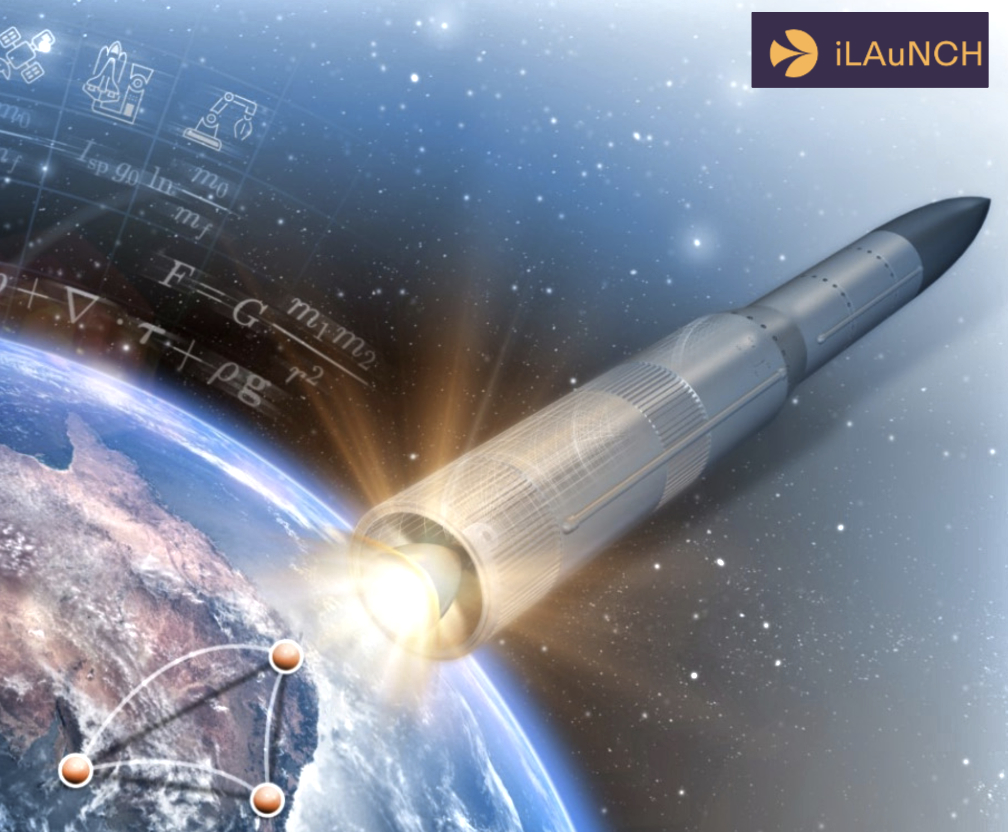
The commissioning of a new multi metal 3D printer in Melbourne, Australia, as part of the iLAuNCH Trailblazer initiative is set to make space missions more affordable and efficient by creating lighter, faster and more robust aerospace components.

The Nikon SLM-280 (Selective Laser Melting) at CSIRO’s Lab22 facility will print metals side-by-side in one continuous print. The technology is extremely well suited to aerospace and space where high performance and lightweight materials are the fundamental drivers of the designs, giving engineers the design freedom to consolidate parts to reduce mass and cost, ultimately making strategic weight decisions where needed.
In rocket engines, typically liquid oxygen and fuel flow through the engine at an extremely high pressure, which are then being injected into the combustion chamber. In particular, on the oxygen side, there needs to be significant protection of the metal surfaces against oxidative attacks of the metal.
This multi-metal printer allows the oxidative resistant layer to be manufactured in one go with the structural metal, speeding up production times and ultimately reducing the cost of the resultant structure. Although rocket engines themselves are typically high-performance heat exchangers, this technology is also applicable to heat exchangers used on aircraft and high-performance ground vehicles such as Formula 1 and other race cars. As low weight, high strength and high heat exchanger efficiency is crucial in racing as well as aerospace and defence, this technology and its advanced manufacturing capability are going to enable the development of novel aerospace products that are of high value to the whole ecosystem.
The multi metal version of the SLM-280 significantly enhances the standard model, which has already been proven internationally:
- A monolithic thrust chamber for a rocket propulsion engine with a unique lattice structure with CellCore GmbH, an engineering firm from Berlin.
- A hydraulic valve block with the VTT Technical Research Centre of Finland, achieving 66% size reduction and 76% weight reduction.
- A gooseneck bracket for reduced buy to fly ratio of 17 down to 1.5, and weight reduction of 31% with ASCO, a Belgian aerospace company.
This multi-material 3D printer is the only one of its kind in Australia, offering users a real advantage in additive manufacturing design. For iLAuNCH Trailblazer projects, SLM 280 technology will make potential space missions more affordable and efficient by creating lighter, faster and more robust space components.
iLAuNCH is building sovereign capability and an R&D ecosystem, essential for technology manufacturers in Australia to send their subsystems to space that will lead to better outcomes — the company’s goal is to help Australian companies compete on a global scale,and capitalize on commercial opportunities.
“This capability is the first of its kind as a production machine in Australia, in fact the southern hemisphere, and iLAuNCH is pleased to open up new manufacturing possibilities for locally made products,” said iLAuNCH Trailblazer Chief Technology Officer Dr. Joni Sytsma. “Australian companies manufacturing satellites and rockets now have a real advantage to optimise their designs and improve performance, all made with a reduced lead time right here in Melbourne. We anticipate that the additional capabilities of this technology can also bring forth novel super alloys that are capable of maintaining ultra-high strength at the ultra-high temperatures that hypersonic vehicles need to survive, with a view to hypersonic air travel in the future.”
“We welcome Australian researchers and industry to access this technology for ultra-high performance applications at CSIRO’s Lab22 Innovation Center, one of Australia’s leading centres for metallic additive manufacturing, located at CSIRO in Clayton Victoria,” said CSIRO’s Senior Research Scientist, Dr. Cherry Chen. “Other uses to consider include satellite structure and componentry, as well as developing novel radiation shielding with alloys that are in development in the various laboratories under the iLAuNCH Trailblazer.”
“For decades, the technology used to bond dissimilar metals was predominantly Hot Isostatic Pressure (HIP) or the actual welding or brazing of two unique metals into one component,” said Nikon SLM Solutions, Global Director, Business Development for Aviation and Defense, Donald Godfrey. “Delivering Laser Powder Bed Fusion technology to generate a truly functionally graded material component to CSIRO marks the first time the technology has been taken out of Germany. This technology sets a new cornerstone in the aerospace and defence and space industry for what is possible.”
